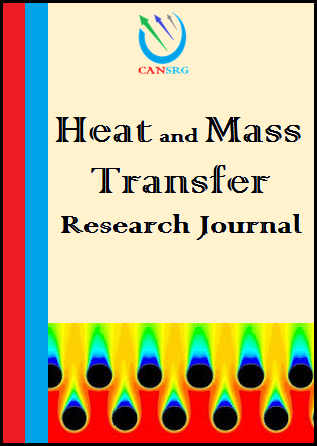
CanSRG

Heat and Mass Transfer Research Journal (HMTRJ)
Research Article
Casting of Tin Bronze Alloy in a Low-Head Mold
Department of Mining & Materials Engineering, McGill University, M. H. Wong Building, 3610 University Street Montreal, QC, Canada H3A 0C5
Submitted: January 25, 2018; Accepted: July 2, 2018
Abstract
A computational modeling study has been carried out for a vertical Direct Chill (DC) ingot caster for tin bronze alloy (C903). The industrial caster modeled here consists of a low-head hot-top mold. The 3-D model incorporated the coupled laminar melt flow and wide mushy region solidification aspects of the casting process. The melt is delivered through the entire open top cross-section of the caster and, as a result, the inlet melt flow to the caster is equal to the casting speed. In confirmatory with the industry practice, three different cooling water temperatures, namely 10, 20 and 30oC, respectively, for the mold, impingement, and streaming regions have been considered. A verified in-house 3-D CFD code developed particularly for the DC casting process is used to investigate the effects of the major parameters such as casting speed ranging from 40 to 80 mm/min., inlet melt superheat varying from 16 to 64oC and the imposed mold-metal contact effective heat transfer coefficient changing from 1,500 to 4,500 W/(m2K) on the low-head casting process. The results are presented pictorially in the form of temperature and velocity fields. At the center of the ingot, the predicted results show that the sump depth, liquid depth, and mushy thickness increase linearly with the casting speed. The shell thickness at the exit of the mold decreases linearly with the casting speed. Useful, practical correlations concerning the above quantities with casting speed are provided to facilitate designing such casters for bronze.
Keywords
low-head DC casting; 3-D modeling; tin bronze alloy (C903); mushy zone; variable water cooling conditions.
Downlaod Full Text >>
This work is licensed under a Creative Commons Attribution 4.0 International License.